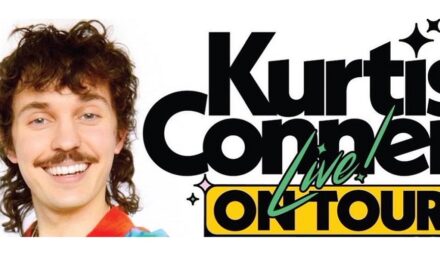Unless you’ve been living on a faraway tropical island without internet for the past few years, you’ve probably heard that video is a particularly hot content asset to use in your content marketing efforts. But, you might also be familiar with research such as Ascend 2’s, which reveals that video is the third most effective asset, after research reports and blog posts. Yet, there’s a high probability you’re not doing video, and the Ascend 2 research uncovers why that is: Video is ranked as the most difficult type of content to produce.
In fact, just saying “we should start doing video” poses a challenge due to the vastness of what the term “video” refers to these days. For example, a 15 second Instagram video, a 90 minute documentary and a recorded webinar might all be referred to as “videos.” Yet, they’re vastly different from one another.
With so much variation in the approaches to video, it’s no wonder that content marketers are faced with challenges about how to produce quality video products.
This is the first of several posts about video that we’ll share to help lift the veil on how videos are produced by examining the anatomy of video approaches that are commonly used in content marketing. Our objective with this series of posts is to help you:
- Plan for and produce video
- Speak the lingo of video production with video providers
- Learn how to buy from and work with video service providers
Sample Video #1: Interview-based Video Stories
Interview-based Video Stories for the content marketer have applications that can range from introducing a company’s team to its customers, to telling stories about customers themselves, or telling a story about something related to a business’s core offerings.
In the following interview-based video story we produced about Chef Vincent Nattress of the Orchard Kitchen on Whidbey Island, we are using his story to help illuminate our own interests in the value of good craftsmanship. By breaking this video’s anatomy down, bit by bit, the following provides succinct, yet complete, insight into producing a video of this sort.
Video is All About the Audio
Nothing can undo or sink any video initiative that involves people telling their story on camera faster than poor quality audio. A good video crew will insure that audio is captured cleanly, clearly, devoid of detrimental effects that can range from buzz in electrical lines to ambient interference (when capturing audio you become acutely aware of how much noise pollution exists, from power tools to airplanes). In this case, we had to turn off all the kitchen’s refrigerators and freezers for the duration of the interview!
Framing the Interview Shot
As we did when interviewing Vincent, it is very common to record the interviewee looking slightly to the right or the left of the camera, as though they are speaking to someone off camera. We do this for one primary reason. Nothing increases the level of discomfort people have with being interviewed more than looking directly into the cycloptic lense of a camera. Having the interviewee look slightly off camera, and at the interviewer, creates a more comfortable, relaxing environment for a conversation to take place.
One Shot vs. Two Shot Interview Technique
A two shot video is one in which both the interviewee and the interviewer are seen on camera. The most common Two Shot that people are familiar with is the news or entertainment interview you would see on TV, where the interviewer is included, too. For Interview-based Video Stories, the more common approach is to have only the interviewee appear on camera. The approach taken in this video is to see only Vincent, and to only hear his voice.
Conducting the Interview
The primary role of the interviewer is to ask open-ended questions that enable the interviewee to tell a story. For a 2 to 3 minute interview-based video story it’s not unusual to record anywhere from 30 to 45 minutes of audio and video of the interview. Since the interviewer doesn’t appear in the video it’s helpful to ask the interviewee to incorporate some part of the question into the answer. For example, instead of a subject answering “red” to the question “what’s your favorite color,” they’d be coached to answer “my favorite color is red.”
Lighting Matters, Both Foreground and Background
Second only to bad audio is bad lighting. Whether the interview is going to take place indoors or outdoors, the lighting on the subject must show the foreground subject clearly, in favorable light. There are relatively few times when “available light” is sufficient enough for this purpose, so a camera crew should show up ready to light the subject, indoors or out. The secondary lighting consideration is the background. In this case, we darkened the room but added a light to the background wall to add some drama and texture to the shot.
Finding the Story Line
Out of the 30 to 45 minute interview we did with Vincent we identified that his thoughts about deeply understanding the fundamentals of his ingredients was key to understanding his approach to cooking, and knowing him as a person. We carefully edited down his thoughts onto this into a 2+ minute story. Once we were confident about the focus of the story, we were ready to shoot B Roll.
Shooting the B Roll
This type of interview-based video story is reliant upon B Roll footage to illustrate the story. B Roll refers to the footage that is often laid over the audio, such as an interviewee’s words. In Vincent’s case, his thoughts about knowing his ingredients, about understanding the physics of cooking, even about gardening, helped inform us about the shots that we needed to shoot to illustrate this story. In addition to shooting new video for the B Roll, we sometimes use existing or archived photographs, video, or illustrations.
The Role of Title Graphics
Have you ever noticed that quite a lot of care is often given to the intro title graphics of feature films? Everything from font choice, to font color, to the animation of the typography contributes to the style and tone of the video. In this case, we chose fonts that have a somewhat nostalgic, “Americana” feel to tie into the craftsmanship theme of this series.
Listen to the Music
In the absence of background music, there is only silence, a barren aural landscape, underlying the interview subject’s voice. Like the choice of font styles for the title graphics, the choice of background music helps establish style and tone for the video. In this case, a slide dobro helped add to the folksy presentation of Vincent and his craft that we were shooting for.






